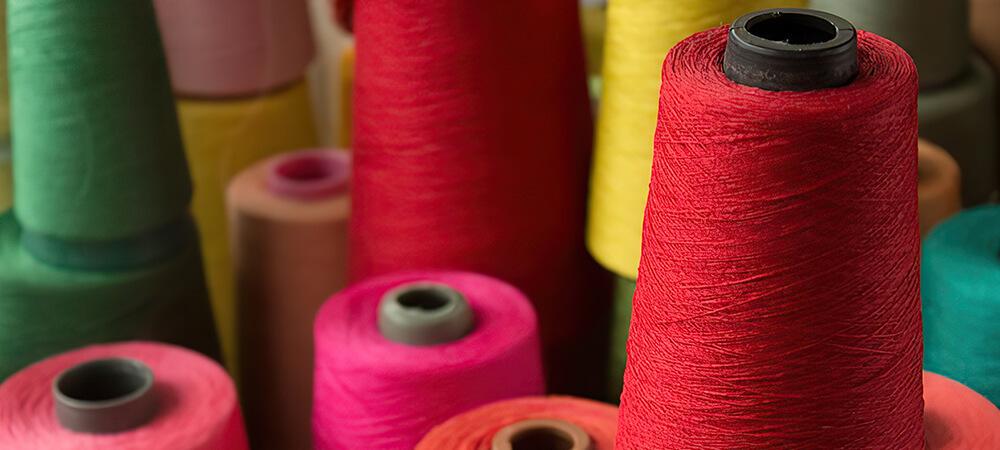Open End Yarn: A Smart Choice for Modern Textile Manufacturing

In the ever-evolving textile industry, yarn plays a foundational role in shaping the quality, strength, and sustainability of fabrics. One of the most widely used and economical types of yarn in modern production is Open End Yarn. Known for its cost-efficiency, versatility, and sustainable potential, open end yarn has become a staple among textile manufacturers around the world.
Whether you're a fashion brand seeking eco-friendly materials, a yarn manufacturer looking to scale cost-effectively, or a buyer researching options, understanding open end yarn is key to making informed choices.
🔹 What is Open End Yarn?
Open end yarn, also known as rotor-spun yarn, is produced using a method called open end spinning. Unlike ring spinning, where fibers are twisted continuously through a spindle, open end spinning involves separating the fibers and reassembling them into yarn using a rotor.
This spinning technique is faster and more energy-efficient than traditional methods, making it ideal for producing coarse to medium-count yarns at high volumes.
🔹 How is Open End Yarn Made?
The process begins with carded cotton fibers or recycled materials that are cleaned and opened. These fibers are then fed into a high-speed rotor, where centrifugal force twists them into yarn. This spinning method eliminates the need for roving, speeding up production while reducing costs.
Because of its mechanical spinning technique, open end yarn has a slightly bulkier structure and a matte finish, making it suitable for applications like:
-
Denim and jeans
-
Towels and home textiles
-
T-shirts and casual wear
-
Industrial fabrics
-
Upholstery and furnishings
🔹 Why Open End Yarn is Popular Among Textile Manufacturers
Here’s why open end yarn manufacturers and buyers prefer it:
✅ 1. High Production Efficiency
Open end spinning is faster than ring spinning, which means yarn manufacturers can meet high-volume demands at a lower cost.
✅ 2. Cost-Effective
Due to the simplified spinning process and the use of lower-cost or recycled fibers, it’s one of the most budget-friendly yarns available in the market.
✅ 3. Eco-Friendly Manufacturing
When produced from recycled cotton or other post-consumer waste, open end yarn becomes a type of sustainable yarn, reducing textile waste and environmental impact.
✅ 4. Versatile Applications
Open end yarn’s strength and texture make it ideal for both apparel and industrial fabrics, making it a go-to choice for many textile manufacturers.
🔹 Open End Yarn and Sustainability: A Perfect Match
In a time when the fashion and textile industries are under pressure to reduce their carbon footprint, open end yarn presents a strong case for sustainability. Here’s how:
♻️ Use of Recycled Materials
Open end spinning works well with recycled cotton, regenerated fibers, and waste yarns. This not only reduces landfill waste but also lowers the need for virgin raw materials.
🌱 Lower Energy Consumption
Open end spinning uses less energy than traditional ring spinning, contributing to lower emissions and energy bills.
💧 Water-Saving Process
When recycled fibers are used, the water footprint of the yarn drops significantly—making it a smarter choice for sustainable yarn production.
Many open end yarn manufacturers now actively promote their role in the circular economy, helping fashion brands adopt more sustainable practices.
🔹 How to Choose the Right Open End Yarn Manufacturer
Selecting a reliable supplier is crucial for ensuring consistent quality, delivery timelines, and eco-compliance. Here are some tips when evaluating open end yarn manufacturers:
-
Check Certifications: Look for OEKO-TEX, GRS (Global Recycled Standard), or ISO certifications.
-
Evaluate Fiber Sources: Opt for suppliers using recycled or responsibly sourced cotton.
-
Assess Customization Options: Choose manufacturers that offer various yarn counts, twist levels, and blends to meet your needs.
-
Ask for Samples: Always test the yarn before bulk ordering to check its performance on your machinery.
Reliable yarn manufacturers not only deliver quality but also offer transparency about their sourcing and sustainability standards.
🔹 Market Trends: What's New in Open End Yarn?
The open end yarn market is evolving rapidly, driven by both innovation and eco-consciousness. Key trends include:
1. Blended Yarn Solutions
Manufacturers are blending recycled cotton with polyester, viscose, or bamboo to create more functional and durable yarns.
2. Color-Sorted Recycled Yarn
Some open end yarn manufacturers now offer pre-colored yarns by sorting waste fabrics by color, eliminating the need for water-intensive dyeing.
3. Smart Manufacturing
Advanced rotor spinning machines now allow better fiber alignment, improving the overall strength and smoothness of open end yarn.
🔹 Open End Yarn vs Ring Spun Yarn: A Quick Comparison
| Feature | Open End Yarn | Ring Spun Yarn |
|---|---|---|
| Process | Rotor spinning | Spindle spinning |
| Cost | Lower | Higher |
| Strength | Moderate | High |
| Texture | Coarser | Softer |
| Applications | Towels, Denim, Casual Wear | Shirts, Dresses, Luxury Fabrics |
| Eco-Friendliness | High (with recycled fibers) | Moderate |
While ring-spun yarn offers more softness and strength, open end yarn remains the better choice for bulk production, lower cost, and sustainability.
🔹 Final Thoughts
As demand for sustainable yarn and ethical textile production rises, open end yarn offers a balanced solution for affordability, performance, and environmental responsibility. It's no wonder more textile manufacturers and brands are turning to open end yarn manufacturers for reliable, eco-conscious alternatives.
Whether you're a buyer looking for cost-effective materials or a brand focused on reducing your environmental impact, open end yarn stands out as a smart, sustainable, and scalable option.
- Vibnix Blog
- Politics
- News
- Liberia News
- Entertainment
- Technology
- Образование
- Art
- Causes
- Crafts
- Dance
- Drinks
- Film
- Fitness
- Food
- Игры
- Gardening
- Health
- Главная
- Literature
- Music
- Networking
- Другое
- Party
- Religion
- Shopping
- Sports
- Theater
- Wellness



